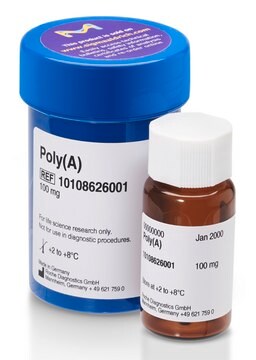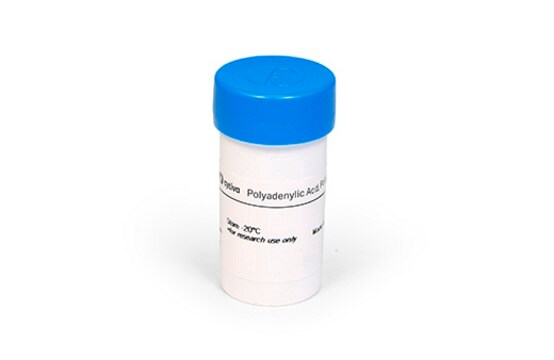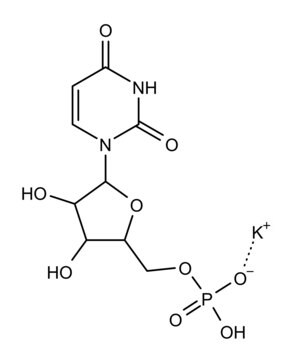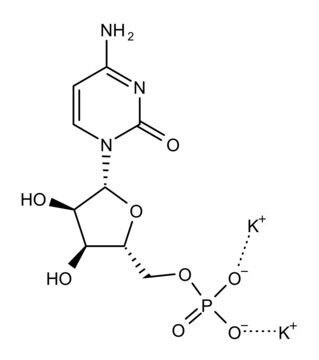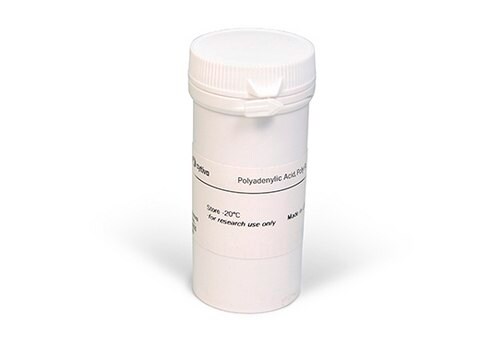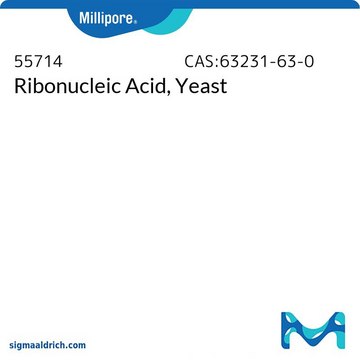P9403
Poly(A)
Synonym(e):
Polyadenylsäure Kaliumsalz, Poly(A) Kaliumsalz
Anmeldenzur Ansicht organisationsspezifischer und vertraglich vereinbarter Preise
Alle Fotos(4)
About This Item
Empfohlene Produkte
Suchen Sie nach ähnlichen Produkten? Aufrufen Leitfaden zum Produktvergleich
Anwendung
Polyadenylsäure (Poly(A)) wird verwendet, um die Bindung von kationischen, mit nichtionischen Nukleolipiden dotierten Liposomen zu beurteilen. Poly(A) wird bei der Entwicklung von niedermolekularen mRNA-Targeting-Arzneimitteln zur Beurteilung der Bindung von möglichen therapeutischen Wirkstoffen wie der Isochinolin-Alkaloidgruppe eingesetzt.
Angaben zur Herstellung
Hergestellt aus ADP unter Verwendung von Polynucleotidphosphorylase.
Lagerklassenschlüssel
11 - Combustible Solids
WGK
WGK 3
Flammpunkt (°F)
Not applicable
Flammpunkt (°C)
Not applicable
Persönliche Schutzausrüstung
Eyeshields, Gloves, type N95 (US)
Hier finden Sie alle aktuellen Versionen:
Besitzen Sie dieses Produkt bereits?
In der Dokumentenbibliothek finden Sie die Dokumentation zu den Produkten, die Sie kürzlich erworben haben.
Prabal Giri et al.
Molecular bioSystems, 6(1), 81-88 (2009-12-22)
The use of small molecules to specifically control important cellular functions through binding to nucleic acids is an area of major current interest at the interface of chemical biology and medicinal chemistry. The polyadenylic acid [poly(A)] tail of mRNA has
Tian-Li Duan et al.
Cells, 8(8) (2019-08-08)
Poly(A)-specific ribonuclease (PARN), a multifunctional multi-domain deadenylase, is crucial to the regulation of mRNA turnover and the maturation of various non-coding RNAs. Despite extensive studies of the well-folding domains responsible for PARN catalysis, the structure and function of the C-terminal
Prabal Giri et al.
Mini reviews in medicinal chemistry, 10(7), 568-577 (2010-05-27)
After fifty years of DNA targeting through intercalators and groove binders and related studies now the current focus is in RNA targeting. Polyadenylic acid [poly(A)] tail of mRNA has been recently established as a potential drug target due to its
Natallia Makarava et al.
Acta neuropathologica communications, 6(1), 92-92 (2018-09-14)
Last decade witnessed an enormous progress in generating authentic infectious prions or PrPSc in vitro using recombinant prion protein (rPrP). Previous work established that rPrP that lacks posttranslational modification is able to support replication of highly infectious PrPSc with assistance
Polyadenylic acid binding on cationic liposomes doped with the non-ionic nucleolipid Lauroyl Uridine.
Cuomo F, Ceglie A, Colafemmina G, et al.
Colloids and Surfaces, B: Biointerfaces, 82, 277-282 (2011)
Unser Team von Wissenschaftlern verfügt über Erfahrung in allen Forschungsbereichen einschließlich Life Science, Materialwissenschaften, chemischer Synthese, Chromatographie, Analytik und vielen mehr..
Setzen Sie sich mit dem technischen Dienst in Verbindung.